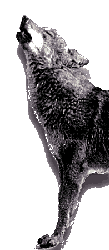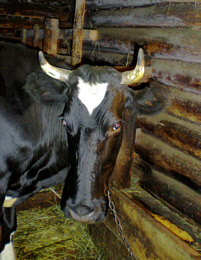
Ilmar Rootsi
Key words: breeding, euphemisms, help and protection, natural forces, respect, right to living, right to catch, sacrifice
Actual worship or veneration of wolf is not known in Estonian folk tradition. Wolf is a wild animal and oral lore about it, which has sprung from herding lore, is versatile and affluent. In the Estonian tradition, wolf was a force of nature that had to be considered – and respected. Already the large number of euphemisms about the wolf is evidence of the great respect for this animal.
The veneration of wolf as a predator is described in several Estonian lore texts as follows:
- (a) people recognised its right to catch. For this purpose each farm allotted a portion of its produce for the wolf;
- (b) because the wolf’s right to catch, disturbing, or even scolding a wolf departing with a catch was prohibited;
- (c) a wolf’s catch could not be used;
- (d) people believed that by slaughtering domestic animals, a wolf also encourages their breeding;
- (e) when a wolf was encountered, it had to be addressed in kind words;
- (f) people were afraid of ravaging a wolf’s den for fear of revenge.
- (b) because the wolf’s right to catch, disturbing, or even scolding a wolf departing with a catch was prohibited;
A wolf – parts and substances of his body and the animal itself – was expected to provide help and protection. The narratives mention wolf’s flesh, throat, skull, fangs, tail, hair and faeces. These were believed to help people to cure their ailments, ensure success and luck in household chores, work, offer protection against evil forces and bring luck in personal life.
In Estonian folk medicine, wolf meat has been used to cure rheumatism; a person who ate its meat was believed to get the magical power to heal other people. Throat was used for beekeeping and growing crops. The skull was kept in the granary as a protective charm. Fangs were used for two purposes: to speed up babies’ teething and as amulets or charms. Tail was used in both love and work magic. Wolf’s hair was used for treating typhoid fever (hundiviga, soetõbi, literally ‘wolf’s disease’). Excrements were used for treating colic.
People expected wolf itself to offer help. When they were seen accompanying a traveller, people believed that this is their way of protecting people against all kinds of malevolent spirits (revenants, ghosts, devils and others) who try to spite people. It was believed that the wolves that protected people were of special kind: toonehundid, or wolves of the underworld, which did not kill sheep.
Wolf is also featured on the coats-of-arms of some Estonian and Livonian families.
Piret Voolaid
Key words: animal lore, riddle subcategories: compound word games, conundrums, droodles
The study focuses on the use of animals in three major recently emerged subgenres of what has become to be called riddle periphery: conundrums, compound word games, and droodles.
- Compound word games are direct “wh”-questions, e.g., Q: How do you put an elephant in the fridge? A: 1. Open the fridge. 2. Put the elephant inside. 3. Close the fridge.
- Droodles mostly consist of a visual image serving as the question and the description of the image serving as the answer, e.g., Q: What is this
 ?
?
A: Four elephants sniffing an orange.
- Compound word games mostly use the initial formula “What” or “Which kind?” and expect, instead of an adjective, a compound word as an answer, such as Mis tõugu hobune on parim ujuja? Vastus: Merehobune. [ Q: What horses swim the best? A: Seahorses.]
Animals appear as characters in these riddles in great numbers but in specific riddle subcategories the animal paradigm manifests in a unique way.
About one fourth of all Estonian conundrums feature animal names, and like in folk narratives (folktale, joke, tall tale) or other genres of verbal art (fable, cartoons, plays) the animal is associated with highly diverse imagery. Quite often these genres include anthropomorphic personification, where human characteristics attributed to a zoological creature tend to function as specific stereotypes and the animals often talk about us and serve as embodiments of humans. The use of animal characters who act as representatives of different types of humans allows safe ridiculing of the vices of humans and the society. In other minor forms of folklore (proverbs and phrases), the most popular animals are generally local domestic animals and fowl, but the most popular animal characters in Estonian conundrums are rather exotic (elephant, hippopotamus, etc.). One reason for this is perhaps the predominance of international material (e.g., elephant jokes originating from the Anglo-American culture area) in the Estonian riddle material, and the exotic stranger is still appealing in folklore texts. The situations and settings in which the animal characters are presented in conundrums (and droodles) are often distanced from the reality, which is why the material associated with animals can be seen as zoological absurdity.
The compound word games point to the favouring of compounds in the Estonian language, and the frequent occurrence of zoological creatures as elements of the Estonian compound words prove that the animal kingdom has greatly inspired the naming of things, phenomena and qualities with compounds. Compound word games are most often based on fixed metaphors (e.g., kohtukull ‘legal hawk’, raamatukoi ‘bookworm’), in which the figurative image has become secondary and the user no longer recognises it.
In Estonian language, animals tend to be used as the end constituent of the compound noun, though there are many others in which the animal name figures as a genitive substantive in the attributive constituent.
One third of the entire corpus of Estonian droodles depict representatives of the animal kingdom, though the most popular ones are those with characteristic appearance (the hare’s long ears, the elephant’s trunk, the camel’s humps, the giraffe’s long and spotted neck, the zebra’s stripes), because these are simple to sketch and thus are easily adopted in the tradition.
The text samples used in the article have been taken from online folklore databases of Estonian conundrums (Eesti keerdküsimused, http://www.folklore.ee/Keerdkys, approx. 25,000 texts), of Estonian compound word games (Eesti (liit)sõnamängud, http://www.folklore.ee/Sonamang, approx. 5,000 texts) and of Estonian droodles (Eesti piltmõistatused, http://www.folklore.ee/Droodles, approx. 7,500 texts).

Lyudmila Lobanova
Key words: animal husbandry, fertility magic, folk veterinary medicine, komi, oral lore, protective magic
In the Komi Republic, folk beliefs connected with veterinary medicine have become a subject of research only in the past ten years. The area of folk veterinary medicine includes preconceptions about the diseases of cattle and domestic animals, the ways of treating the diseases, and the preventive magico-ritual practices which were associated with specific folk calendar holidays or were established in traditions connected with stockbreeding (such as the rituals performed during buying or selling cattle, driving the herd to the pasture, or in occasional situations (mating, birthing, etc.)).
The reciprocal influence of the various aspects of Komi breeding rituals was conditioned by the socio-regulatory function. The ritual practices mostly regulate social relationships in the household (home), because the welfare of a household was determined by the size and the health of the herd. The latter aspect is particularly evident in the rituals observed while buying or selling cattle. A successful acquisition of the animal and its adaptation in a new home needs making practical arrangements. It also has to do with the magical sphere of the household and, thus, establishing friendly relations between the new animal and the guarding spirit of the family and the household.
Recent fieldwork materials allow us to conclude that popular views on cattle diseases and their causes, methods of treatment and prevention continue to exist alongside official veterinary medicine.
Liisa Vesik
Key words: anonymity, pet boards, pet portal, pets, virtual communities
The article outlines the changes that Estonian public pet web pages and pet forums have undergone in 2004–2008. Evolution has caused changes in both the technological solutions of these portals as well as in the contents, reflecting a shift in people’s attitudes and values. Web sites have an important representative role, and the use of ee-domains adds authority on the Estonian web. Recently, there has been a significant shift away from anonymity on message boards in terms of registered and identifyable users as well as a more efficient control of adherence to netiquette. More classifieds are being published online, and not only on free sites. The primary aim of pet forums and portals is dissemination of information, but the sites intended mostly for entertainment purposes are on the rise. Users choose which web environments to visit not only based on their design and ease of use, but based on a combination of these qualities, and also depending on the needs of individual users.

Anu Korb
In the summer of 2008, Estonian folklorists Anu Korb, Astrid Tuisk, Andreas Kalkun, and Tiit Sibul took part in the fieldwork expedition carried out among Estonians living in the villages of Krasnoyarsk Krai, Russia. The team of folklorists collected information about the establishment of the villages, the local song tradition, folk calendar rituals, family holidays, popular methods of treatment in folk medicine, and folk tunes.
Next to the lore material collected on previous expeditions in Siberia, the team recorded material about the everyday life of the people: working on collective and state-owned farms, coping in present-day Russia, residential houses and their interior, traditional food, etc. The photographs taken and videos recorded inform about the cemetery tradition in the village, local handicraft, interiors of houses, etc.
The 2008 fieldwork expedition resulted in about 75 hours of audio-recorded material, 30 hours of video-recorded material, over 2,000 photographs and the fieldwork diaries of members of the expedition team.
News, overviews
Izold Pustylnik, eminent Estonian-Ukrainian astronomer and senior research associate at the Tartu Observatory, died on the early morning of May 2, 2008. Overview of Izold Pustylnik’s life and work by Estonian astronomer Tõnu Viik. Eulogy in English published in vol. 40 of Folklore: Electronic Journal of Folklore, available at http://www.folklore.ee/folklore/vol40
On 10 September 2008, the Estonian folklorist Hilja Kokamägi, sister of the wellknown Estonian artist Luulik Kokamägi, celebrated her 85th birthday. To mark the event, journal Mäetagusedpublishes extracts from Hilja Kokamägi’s memoirs about her life in the town of Valga during the period of German occupation in Estonia.
On 5 October 2008, Lembit Karu, archivist and researcher at the Estonian Agricultural Museum celebrated his 60th birthday. Asta Niinemets, editor at the Department of Folkloristics, Estonian Literary Museum, reviews Lembit Karu’s career as an artist.
The second conference on charms entitled “Charms, Charmers and Charming” was held on 11–13 May 2007, and was jointly organized by the Department of Ethnology and Cultural Anthropology, University of Pécs, Hungary, the International Society for Folk Narrative Research, and the Folklore Society, London. On May 9, 2008 the scholars of charms all over the world met at the symposium in Tartu to discuss narrativity in charms. Overview of both events by Estonian folklorist Taisto Raudalainen is available in English in vol. 40 of Folklore: Electronic Journal of Folklore (http://www.folklore.ee/folklore/vol40/news.pdf).
Czech scholar Iivi Zajedova, researcher at the Department of Choreography, Institute of Fine Arts, Tallinn University, overviews the international seminar Rahvatants kui identiteedi kandja (‘Folk dance as a bearer of identity’) discussing the safeguarding of Estonian identity and folk dance. The seminar was held on 30 April, 2008 at the University of Tallinn.
On May 22–23, 2008 the Department of Folkloristics at the Estonian Literary Museum, the Astronomy Group at the Tartu Old Observatory and the Estonian Folklore Institute organised an international interdisciplinary conference “Estonian Sky, Vol. 2. Time and Space” which discussed the different areas of study in folk astronomy.
Overview of the event by Andres Kuperjanov is available in English in vol. 39 of Folklore: Electronic Journal of Folklore (http://www.folklore.ee/folklore/vol39/news.pdf).
Overview of the event by Mare Kõiva is available in English in vol. 40 of Folklore: Electronic Journal of Folklore (http://www.folklore.ee/folklore/vol40/news.pdf).
Sherman, Sharon R. & Koven, Mikel J. (eds). 2007. Folklore/Cinema. Popular Film as Vernacular Culture. Logan, Utah: Utah State University Press. 232pp.
Review of the book by Estonian narrative researcher Eda Kalmre is available in English in vol. 40 of Folklore: Electronic Journal of Folklore (http://www.folklore.ee/folklore/vol40/books.pdf).
Березкин Ю. Е. 2007. Мифы заселяют Америку: Ареальное распределение фольклорных мотивов и ранние миграции в Новый Свет. Москва: Объединенное гуманитарное издательство, 360pp.
Review of the book by Estonian folklorist Nikolay Kuznetsov is available in English in vol. 38 of Folklore: Electronic Journal of Folklore (http://www.folklore.ee/folklore/vol38/books.pdf).